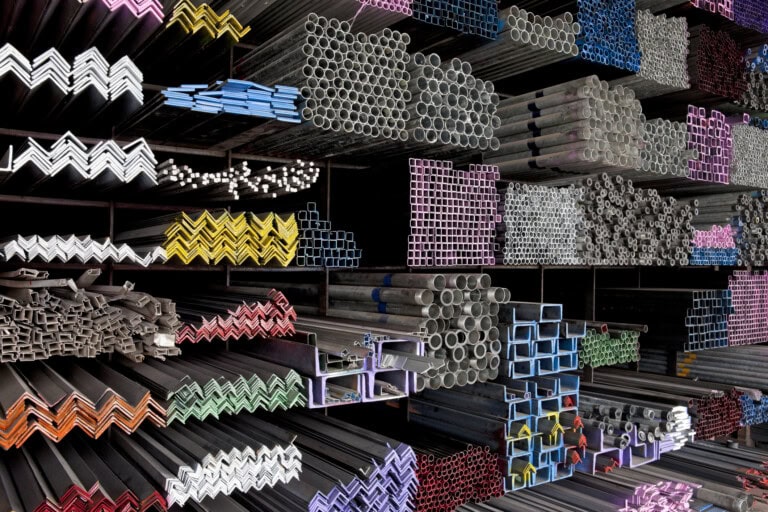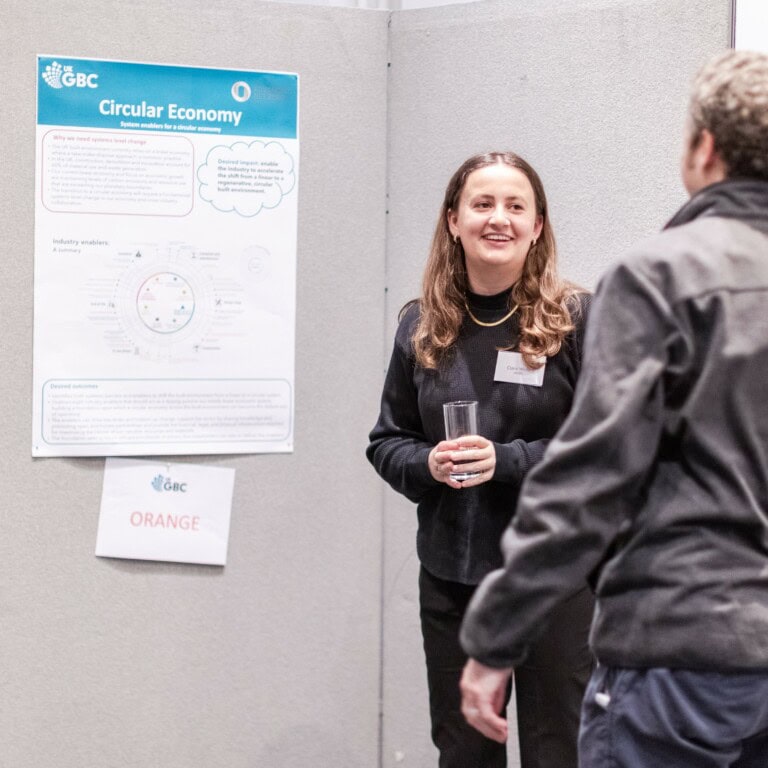What are Material Passports and what are the benefits of using them?

‘Material passports’ has become a bit of a buzzword in the world of circular economy and construction. To discuss the role of material passports, UKGBC recently chaired a panel discussion at Futurebuild alongside Philippa Birchwood, Anastasia Stella, Rachel Hoolahan, and Yingli Wang who all have expertise in this area. This panel offered an opportunity to dig into the role materials passports can play, and what the benefits and challenges are when implementing material passports on projects.
What are material passports?
Essentially, they have the possibility to store information of materials, carbon and environmental impact, material health and safety, demountability, and warranty and certifications in one place
Let’s start with understanding in full what materials passports are. Material, building or product passports can be described as an instrument that offers a platform and repository for storing, linking and providing relevant information actors along the value chain (Building As Material Banks (BAMB) 2020). They can be created with different levels of data, creating different types of passports, from material and products, up to building-level passports. Essentially, they have the possibility to store information of materials, carbon and environmental impact, material health and safety, demountability, and warranty and certifications in one place.
While broad consensus on the scope and approach have not yet been reached, there are several initiatives providing research, insights and methodologies. Recently, two publications have gained traction in the the UK, namely the Orms materials passport policy paper and the Waterman materials passport framework. The European Commission is also looking at regulation regarding Digital Product Passports (DPP) for the construction sector.
What are the benefits of passporting materials and buildings?
Data transparency
We currently have much of the data for materials passports, just not in an easily accessible format which is kept up to date. The data gathered for buildings is often stored away in O&M manuals or databases, but they are not always the most user-friendly. Materials passports can help make this information easier to access by storing it all in one place; this can include certifications and warranty, EPDs and embodied carbon data, and an ingredient list of the material or product for health and safety requirements. Materials passports are lifecycle documents which are updated throughout the product’s life. They can also collect data from pre-demo audits, existing surveys, and testing after demolition, acting as a tool for data and understanding of end-of-life options for materials.
Material reuse
Material passports are key to unlocking circularity and material reuse in existing buildings. A common challenge when retrofitting or looking at material reuse from demolition is understanding which materials are currently in a building. If a building comes with a material passport which has been kept up to date, many of these challenges are addressed.
Material passports are key to unlocking circularity and material reuse in existing buildings.
They can be part of a due diligence process, allowing you to store all the information you may need in a way you can access it easily in the future. As such, these passports are a crucial enabler for the reuse of materials and can even contain information related to the different options to reuse that product or material. The information can then be transferred via the passport to the secondary marketplace and onto the new buyer and owner of that material whilst providing the design and construction teams with the information they need in the meantime.
Material value
In the UK there is a growing appetite for reused materials to help lower embodied carbon through design decisions, meaning the value of materials after their typical end-of-life at strip out or demolition is becoming more important. Material passports can store this information as well as data for warranty and insurance which can be used to sell the material in the future. Materials passports can also connect to online secondary material marketplaces, allowing materials and products to be bought and sold, providing data on the value of the material as transactions for reused materials increase.
Although they are a data transparency solution there will be some challenges around the data and ownership. Considerations need to be made around who will be able to access the data, and at what point in the building life.
Where are there currently challenges around this?
We do not have a standard yet for materials passports or DPP’s so you need to understand what data you need for the passport. Much of the data you may already have, but some data is more important than others, as a user you need to think about what level we need the data at (materials, products, system) for the materials passport to perform its function. Is this a new product or material where you want to store information for future reuse, or is this a product coming out of a building now and you need to gather the data in one place to enable reuse now?
Manufacturers, in particular, need to think about what data they have, and what they don’t, how the data will be carried. Some of this may depend on where your material sits within a building and its use. There is also the wider question of do you want to be involved in the second life of the material or will it go onto the open secondary marketplaces. There are also considerations as to how materials passports integrate into the supply chain. Developers need to work with the contractor to get the additional information and have it written into subcontractor agreements, so the data is in place rather than going straight to the manufacturer.
Although they are a data transparency solution there will be some challenges around the data and ownership. Considerations need to be made around who will be able to access the data, and at what point in the building life. The data also needs to be able to operate between the different material passport platforms as this is ultimately about data management.
Watch the recording of the discussion here.
Clare Wilde is a Project Officer for UKGBC’s work on Circular Economy and Nature. You can learn more about our work on the circular economy here or read her previous blog on the tools we have for unlocking a circular economy here.
Related
Using the tools we have to build a circular economy

Collaboration and Early Engagement to Enable a Circular Economy: Opportunities and Barriers

What does it mean to be 100% circular? Metrics, Benchmarks and Indicators for the Circular Economy

What are the environmental impacts of construction materials? An introduction to Embodied Ecological Impacts


